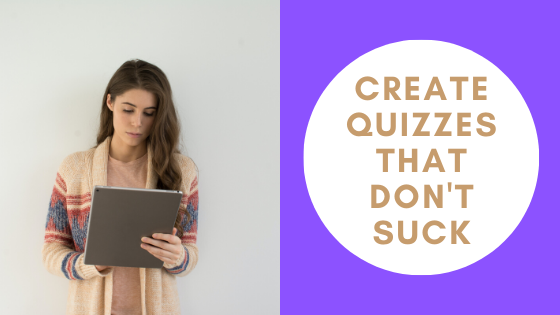I held my breath anxiously….
What am I supposed to say?
Am I even worth speaking to?
Have you ever spoken to a sommelier? I have, like once. And it invoked anxiety and insecurity.
Before I could figure out how to gracefully order the cheapest option, I found myself in a fun and engaging banter with the person in front of me.
And that is exactly the point — sommeliers are there specifically to create an amazing experience. They learn about your tastes and preferences, they engage in dialogue and questions, and they educate you about their products.
Now Imagine if you had a salesperson like this for your ecommerce store–one who creates an engaging, educational experience, and makes sure that every customer walks out of the door with an unforgettable and pleasant experience.
Here’s what would happen:
- you would have more customers (a higher conversion rate)
- they would purchase more (a higher average cart value)
- they would purchase more frequently because they have a relationship with your store (repeat purchases)
Interactive quizzes can educate users about your products, create personalized recommendations, and drive visitors to complete more lead forms and purchases.
According to a study by Barilliance, personalized product recommendations drive higher order values (to the tune of 31%) as well as higher conversion rates.
In this post, we will learn how to create the perfect quiz–one that your customers would love to fill out, and at the same time share key data points that will help you create more targeted and compelling marketing campaigns.
We will cover:
- Why Quizzes are critical for ecommerce stores
- How To Craft a Quiz to Fulfill Your Primary Goals
- How To Segment Your Audience
- How To Create Compelling Questions
Ready to create a cost-effective growth machine into your ecommerce site? Let’s go!
An Overview
Creating a great quiz is a microcosm of marketing fundamentals.
Who: You need to know who your audience is.
What: What problems they are experiencing.
Why: What their goals are.
Where: Where can you find your audience?
And position your product in a way that shows the prospect that you deliver exactly what they need.
If you nail this process, the rewards are sizable.
According to this Salesforce study of 150 million shoppers, personalized recommendations drive higher revenue, 10% higher average order value, and higher conversion rates.
Quizzes are an effective top of funnel strategy, to learn about customers and provide a more personalized shopping experience. And the information you gather in a quiz can be invaluable in tailoring your messaging to share the content that that your customers care about.
Quizzes can drive your product recommendations, and rest assured that you are offering the right suggestion, because after all, you asked them
Now let’s get into the five steps to creating an amazing quiz.
- Identify Your Goals
- Know Your Audience
- Choose Your Outcomes
- Write Your Questions
- Drive Your Traffic
1. Identify Your Goals
As an ecommerce site, you will have two primary goals: sell more product, and capture more leads.
There are secondary goals that are also important: gather information about users, add more data points to create more segmented audiences, etc.
Many ecommerce brands use quizzes as the first touch point and call-to-action, because it’s critical to sending users down the right path.
Narrow The Selection
Brands with a variety of products use quizzes to guide users to the right product from the start. The paradox of choice can create overwhelm, inaction, and confusion.
Barry Schwarz notes in this HBR article, “More [choice] requires increased time and effort and can lead to anxiety, regret, excessively high expectations, and self-blame if the choices don’t work out.“
Have you ever been inside a mattress store? If you’re like me, you see a room full of mattresses, some nauseating fluorescent lights, and want to leave as soon as humanly possible.
Finding the perfect mattress is a fine-tuned balance of many attributes.
Helix Sleep realizes this, and drives users to take a quiz as the very first step upon landing on the homepage:
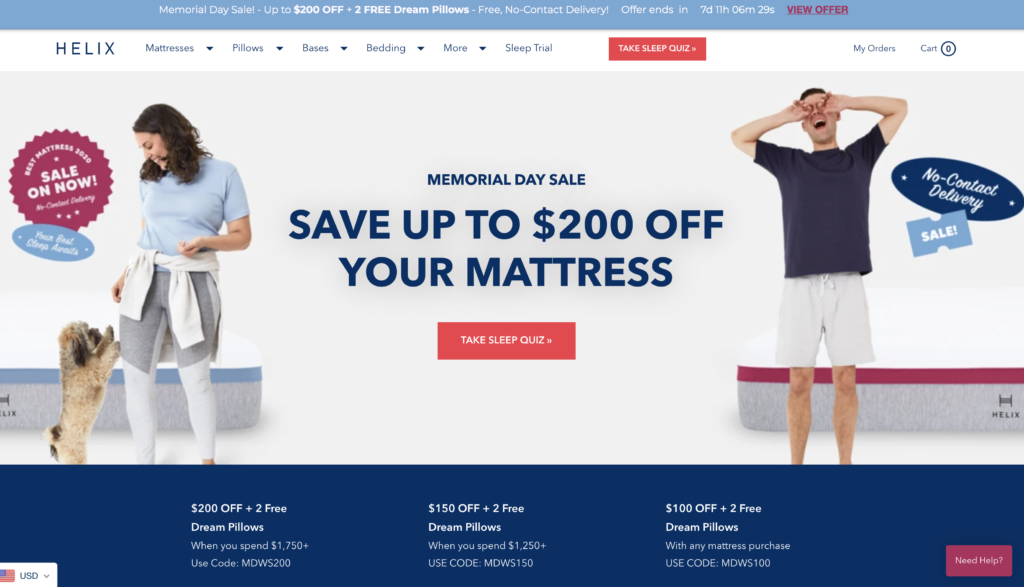
Selling glasses presents a similar challenges–so many options to choose from, yet relevancy is critical. Male or female, face shape, preference in style, sunglasses or prescription? All of these questions are answered in this beautifully-designed Warby Parker quiz:
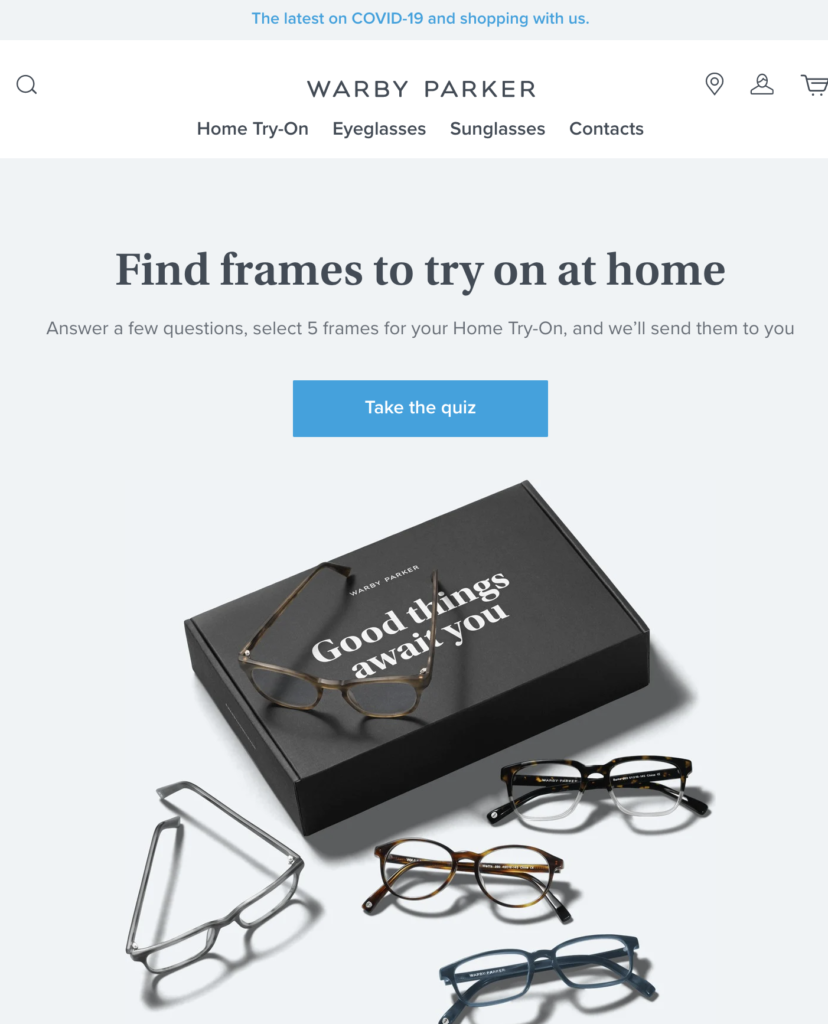
Quizzes are a great jumping off point, as both Helix and Warby Parker have a variety of products and SKU’s, so it is easier to give a jumping off point.
Personalized Recommendation
Direct To Consumer Brands have one chance to make a good impression. And considering the unit economics of the cost to acquire a customer, an acquired customer may only become profitable after multiple purchases.
So it is important to recommend users to the most appropriate product.
If it were a brick and mortar retail store, this would be the job of your salesperson: to ask the right questions, understand the product selection, and recommend the appropriate pairing.
This does not work at scale, so a quiz becomes the recommendation engine.
Titleist asks several specific questions to uncover the tendencies of a golfer before recommending the right golf ball:
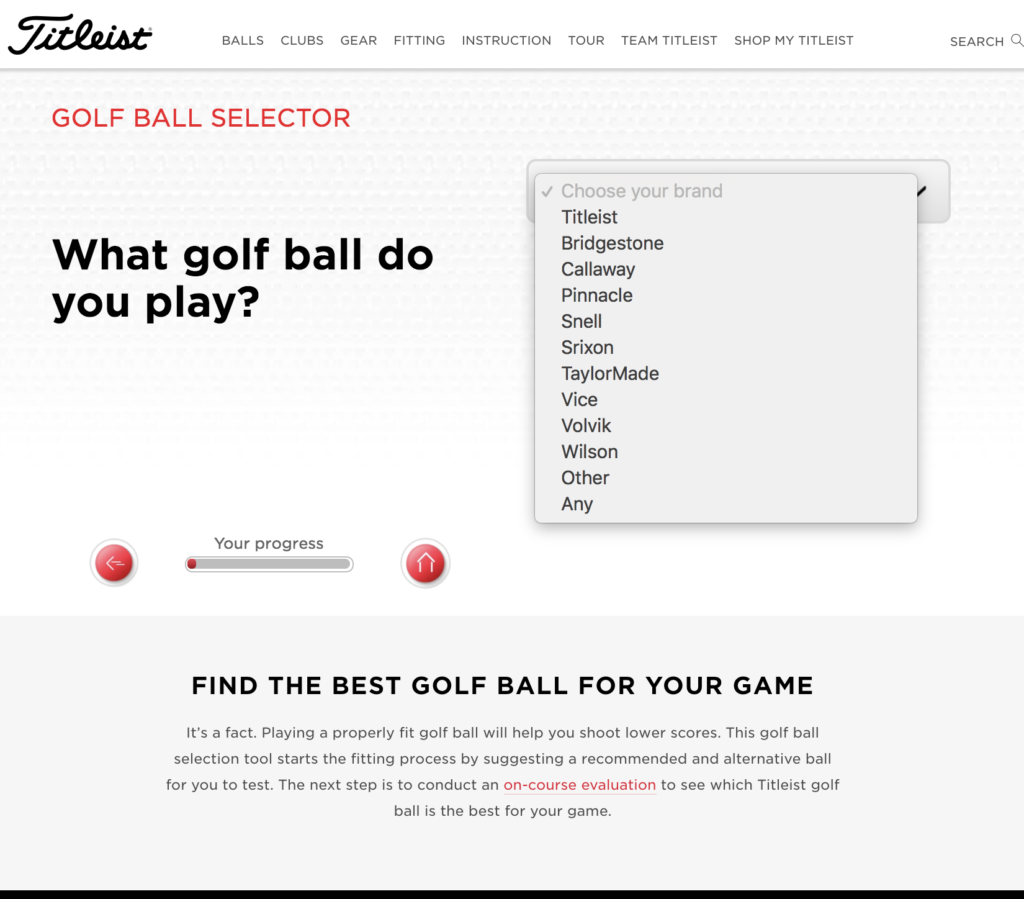
At Scentbird, a subscription fragrance company, the quiz is designed to learn the highly personal preferences of scent.
Wearing a specific perfume or cologne is a decision that becomes a commitment every day, so you can imagine that understanding the customer’s needs, and guiding them to the right product, is critical.
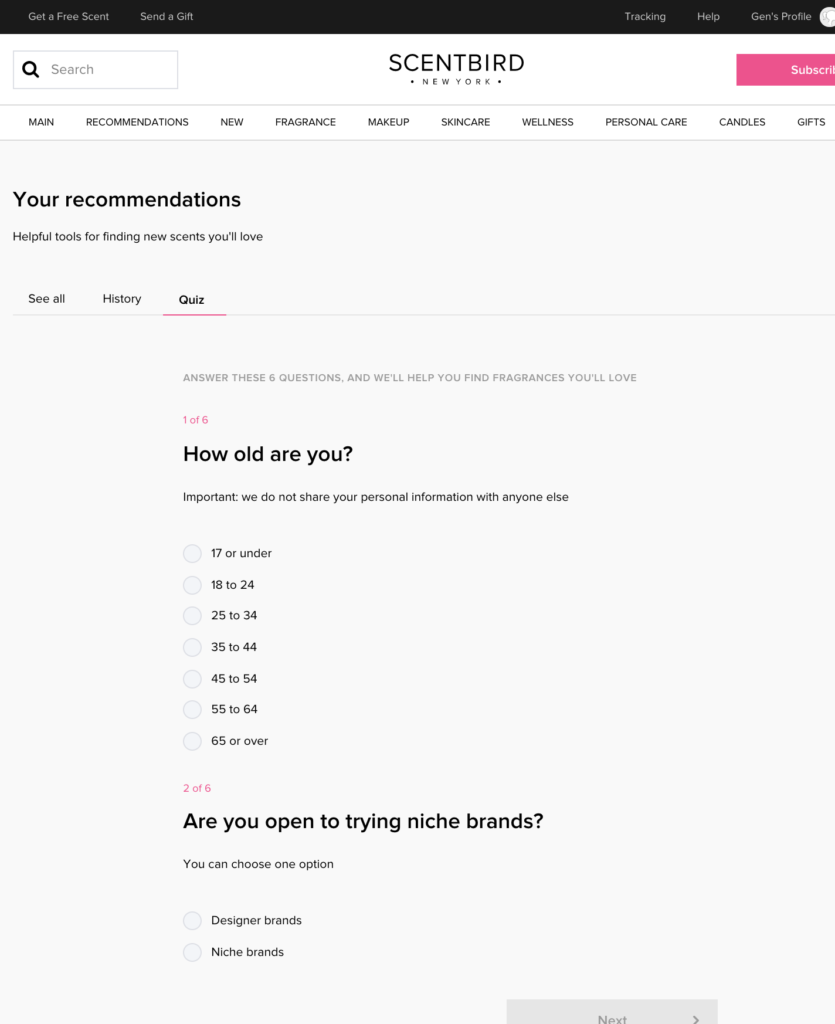
Product Education
Coffee is a commodity. You can get your caffeine fix for a dollar at your local bodega, and it is “coffee”. Alternatively, you can pay $25 for a cup. Conveying the inherent difference in price makes it especially hard to market coffee online.
Trade Coffee offers snippets of educational content throughout their quiz, which builds a relationship and trust with the customer, but also maintains engagement. As users learn more about coffee, and Trade’s coffee in particular, they are more attune to why it makes sense to pay premium prices for the coffees that Trade sells.
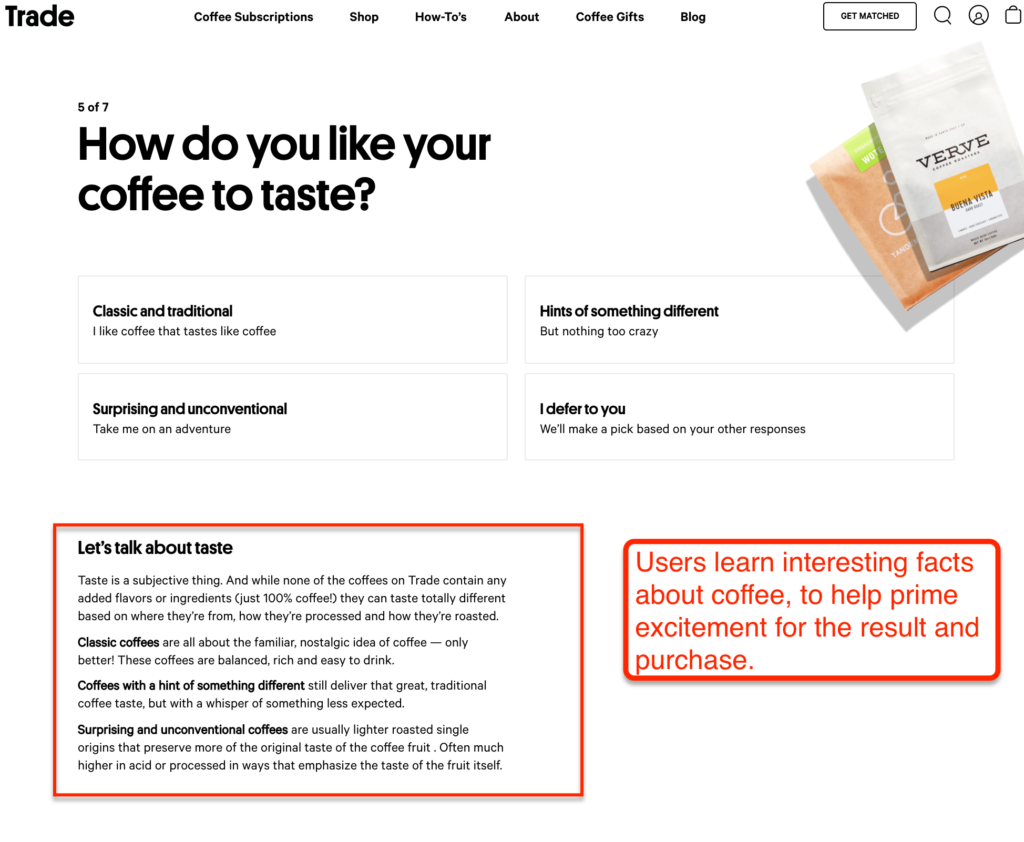
Lead Capture
Before sharing the results of the quiz is the perfect time to ask for an email address. It is the exchange of value–and allows you the opportunity to follow up.
Most quizzes will have a lead capture before showing the results of the quiz.

2. Segment Your Audience
You have likely determined a few personas in your customer base.
Beardbrand, for example, has different types of men who like beards–the hipster, the lumberjack, the biker, etc. They have users self-select into these categories with a few questions, and then after additional qualifying questions, place them in distinct segments.
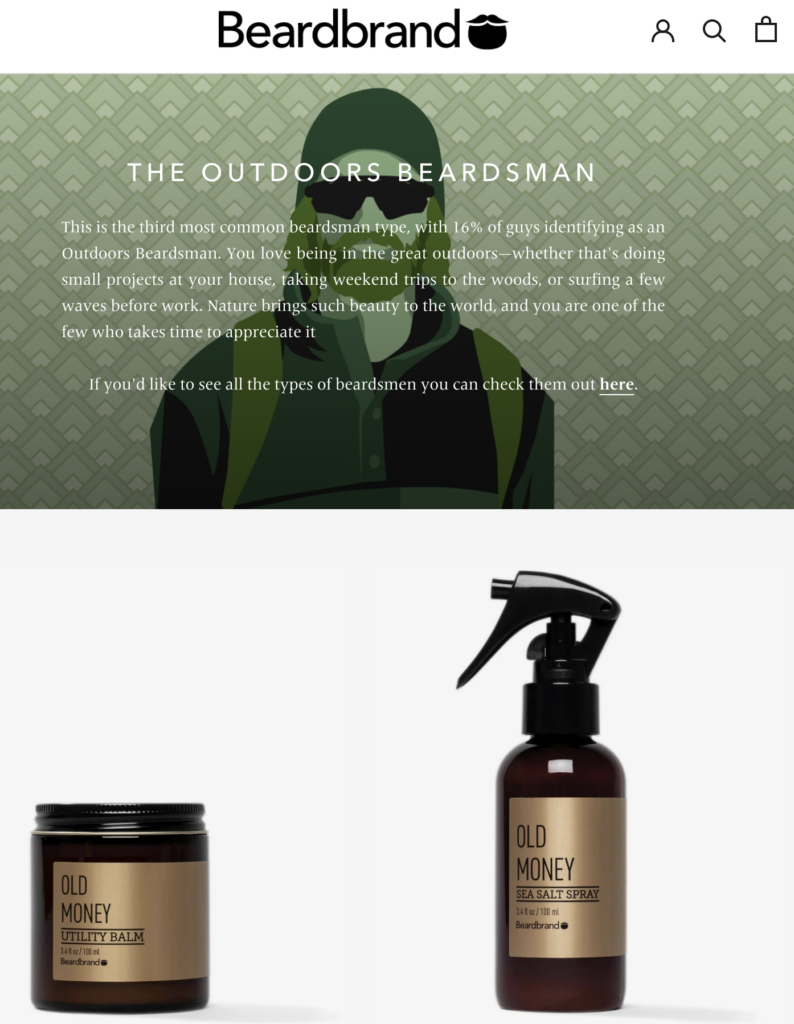
Part of the fun here is that quiz takers can see what segment they fall into. But more importantly, from a marketing perspective, these segments align to certain products. And this is where quizzes derive value–by putting the best-suited products in front of customers.
3. Choose Your Outcomes
The products that you recommend to quiz takers are the climax of the experience.
This part of the quiz experience is part art, part science. Companies with large data sets can comb through the data to deduce products to match customer data points with specific products.
But alternatively, it can be high level recommendations, like this Pottery Barn quiz:
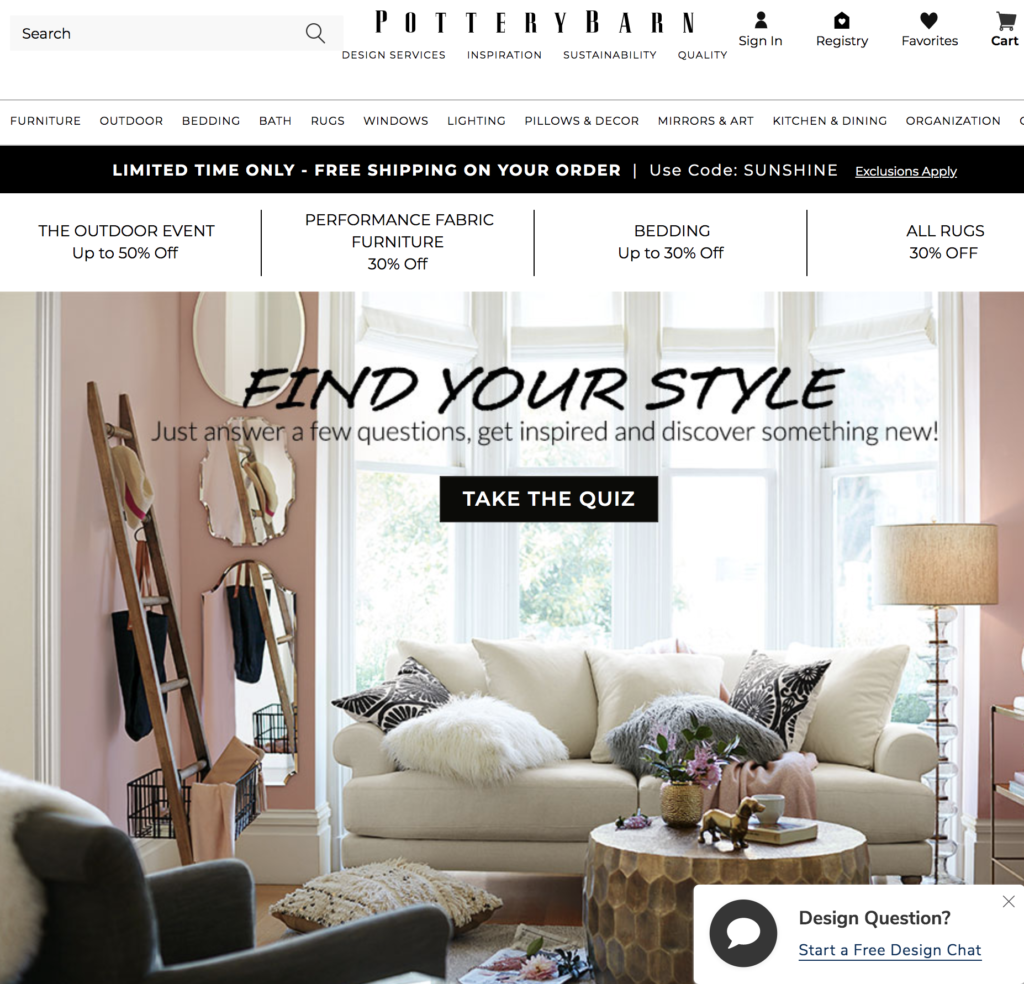
Providing relevant recommendations is where you can leverage quizzes to improve conversion rates.
An Accenture study found that 91% of consumers are more likely to buy from companies who remember them and provide relevant offers. And 83% of them are also willing to share their data in exchange for a personalized experience.
So think carefully about the user experience, and how you can personalize the shopping experience with thoughtfully chosen products and educational content to reinforce the brand’s values.
4. Write Your Quiz
Writing the questions to your quiz is the culmination of some of some of copywriting’s timeless rules.
- Write in a simple and direct voice.
- Create curiosity when writing your headline
- Understand your audience, and their goals
You have already identified your goals with the quiz, and what customer personas will be taking the quiz.
With this audience in mind, write a quiz that is 5-7 questions in length (only going longer if absolutely necessary).
Each question should have no more than 6 potential answers. Again, we are trying to reduce user fatigue that arises from too many choices.
Sometimes photos can be helpful to communicate a point more quickly and efficiently, but no need to force the issue with that.
Including educational points along the way can keep the quiz-taking experience more enjoyable
5. Drive Your Traffic
Now that your quiz is ready to engage visitors, capture leads, and recommend products, you are ready to get it in front of people!
As mentioned earlier, quizzes are great for top-of-funnel traffic, as a first touch point with visitors.
So you can add a call-to-action on the homepage, like Trade, Helix, and Beardbrand:
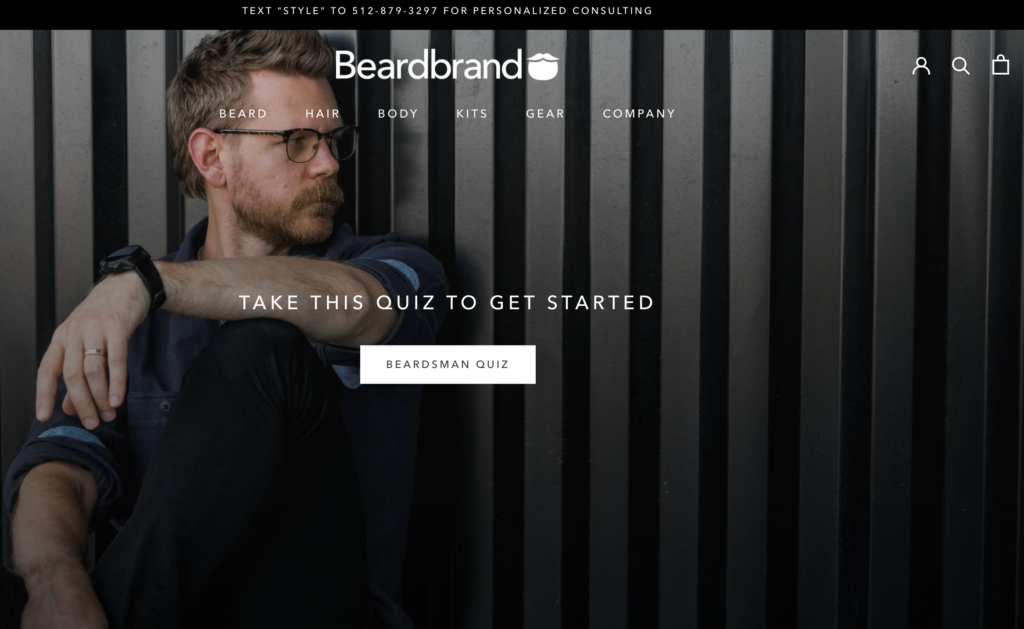
Quizzes are a prime opportunity to drive cold paid traffic to, as a landing page to a paid ad.
Here’s an example of how Trade uses their quiz to create curiosity in a paid ad:
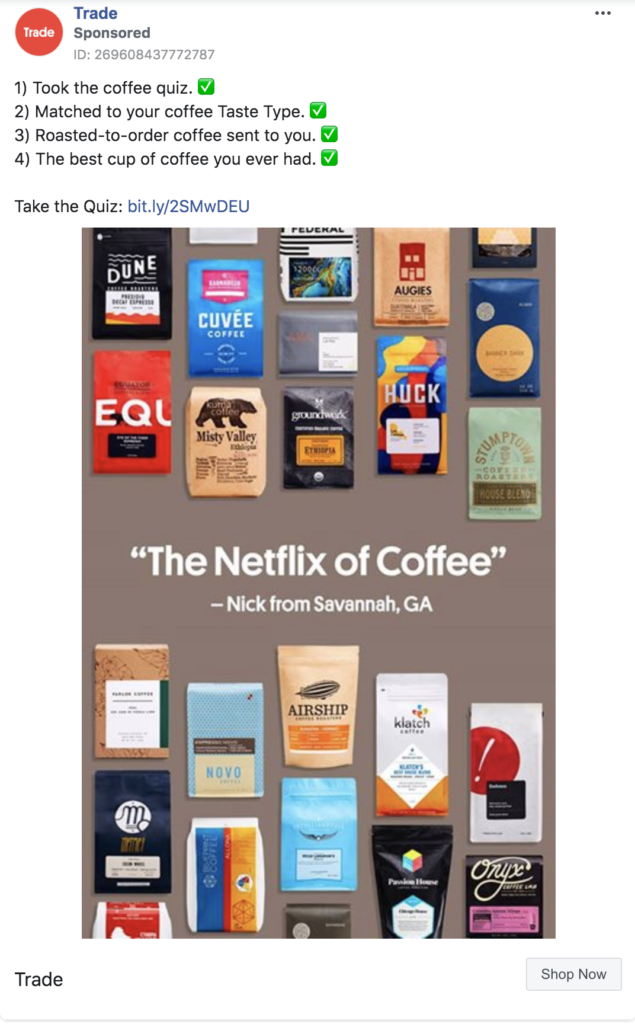
Social Media:
Quizzes became viral marketing tools with the Buzzfeed-style personality quizzes. People love to share the results of these quizzes, and it is incredibly easy to do so.
Take a look at the end of this quiz, “There Are Six Types Of People — What Type Are You?” With one click, you can have a facebook post or Tweet queued up and published.
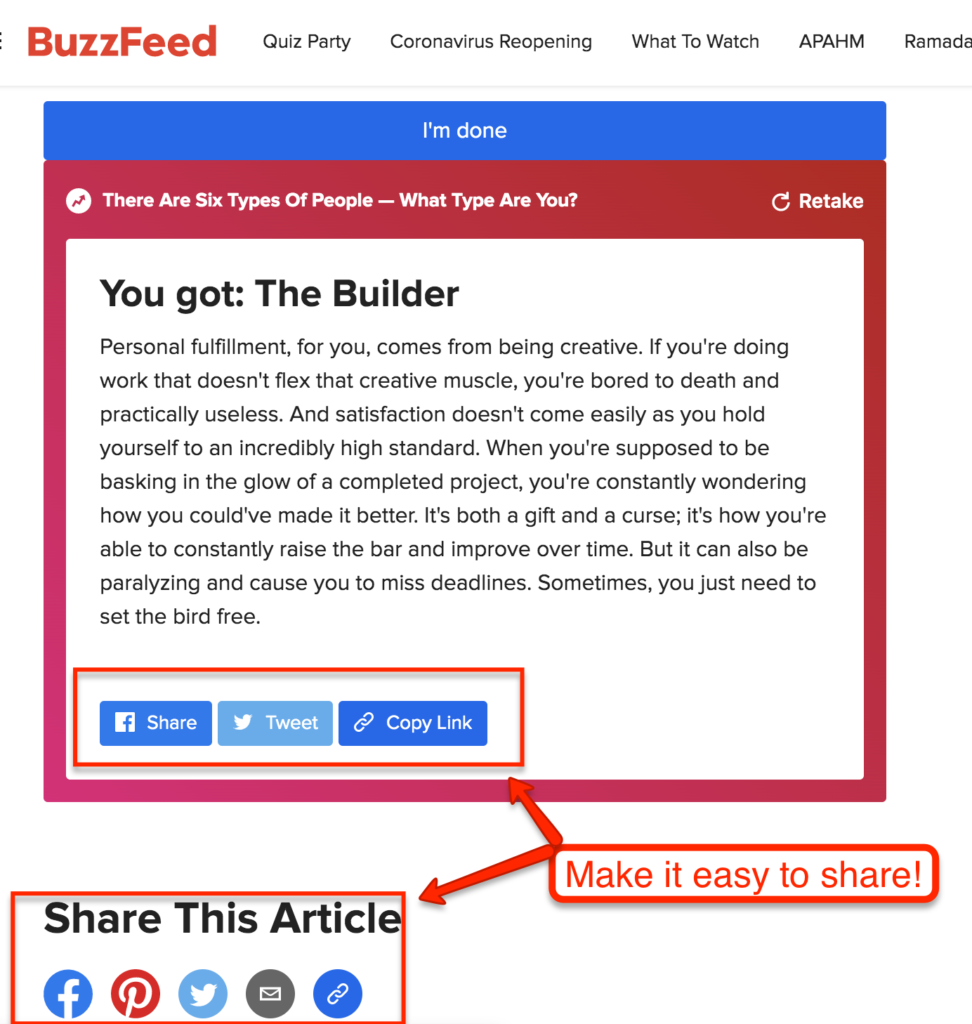
I mean, kind of hard not to share something like that if it is made so easy.
Bringing It All Together
So now we understand, and have seen examples, of how a quiz can create magical and personalized experiences for users, while guiding them to a product that is suited to their needs.
Putting it all together, what does the experience look like?
Helix Sleep has a great experience, and one that they value, if you look at their homepage where it is the main call to action above the fold (and six calls to action, in total on the homepage).
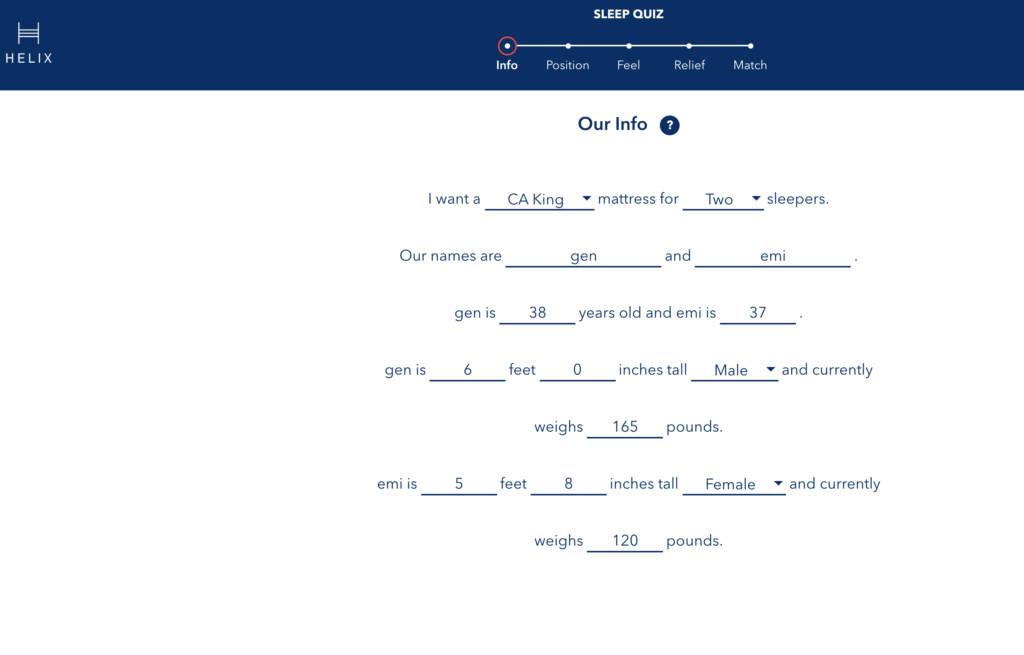
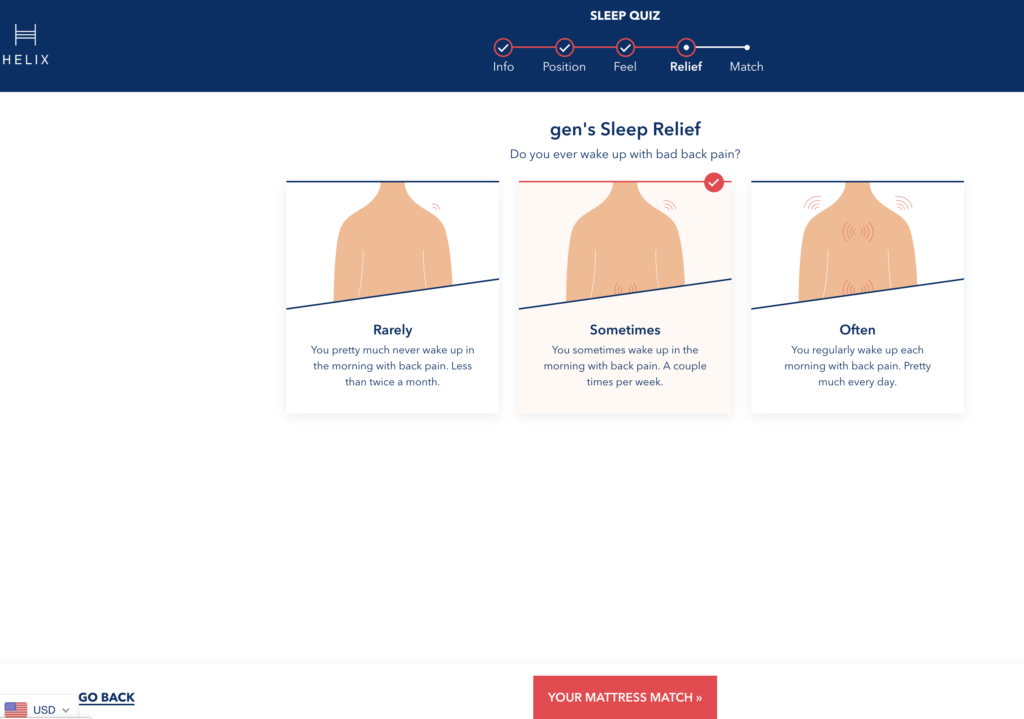
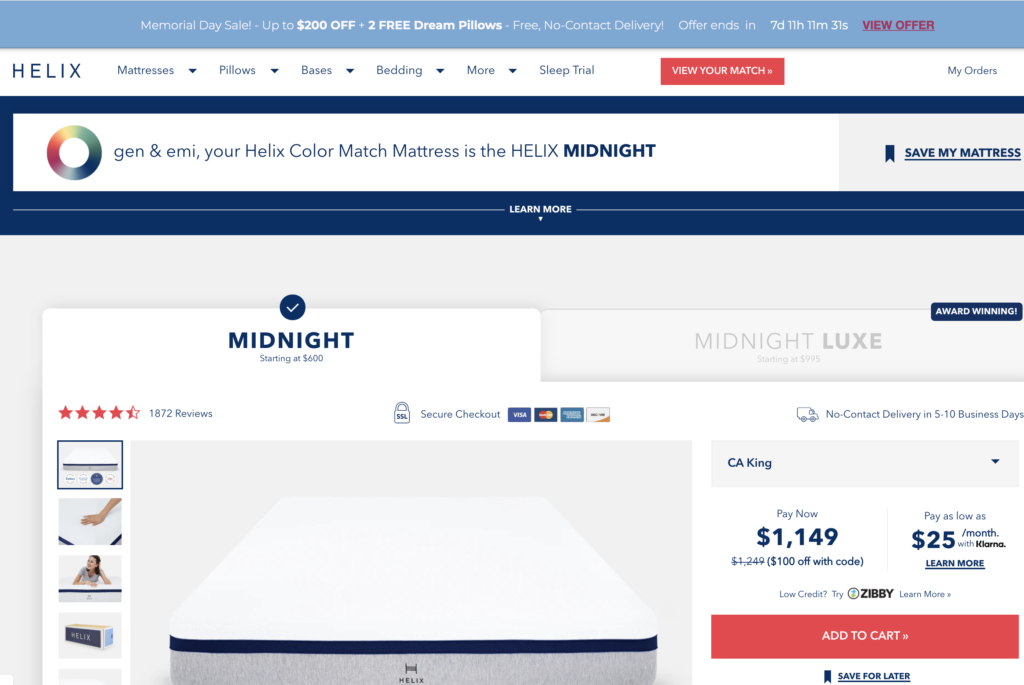
Helix is the type of profile that benefits from product recommendation quizzes:
- Mattresses are high ticket items – personalization is important
- Many SKUs, with nuanced differences – the customer experience and satisfaction is highly dependent on getting the customer to right product.
- A longer sales cycle, where capturing emails is important
This post has hopefully laid out some ways that quizzes can help your ecommerce site identify what challenges and problems your visitors are experiencing.
Because you have taken the time to strategize what your goals are, and understand how your customer segments pair up with your product offerings, you are prepared to create a personalized experience that will make visitors more engaged, more likely to convert.

